Axis P3301 IP Camera Review
Axis P3301 IP Camera
If surveillance and security are high on your agenda, Axis' P3301 IP camera has the features and image quality to meet your needs.
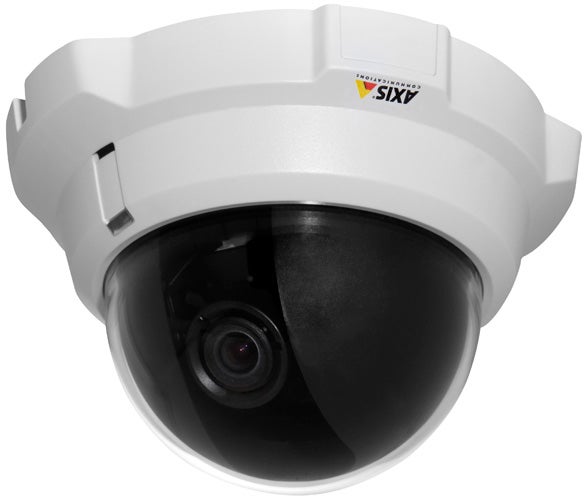
Verdict
Key Specifications
- Review Price: £615.25
One of the biggest hurdles IP cameras have to overcome is the perception that they eat up network bandwidth. In today’s Gigabit networks this simply isn’t an issue but Axis’ latest P3301 delivers new methods of reducing demands on the network even further.
Up until now the majority of IP cameras have offered support for both Motion-JPEG and MPEG-4 video compression with the latter being the favoured method. The P3301 no longer supports the MPEG-4 Part 2 codec and has replaced it with MPEG-4 Part 10 – H.264 to the rest of us.
This compression technology certainly isn’t new and vendors such as Sony have offered it with some of their surveillance products for a while now, but the P3301 is one of the first IP cameras to market that supports multiple H.264 and M-JPEG streams. The H.264 codec has also been with us for a number of years, but its popularity is increasing massively as demand for multimedia applications rises. 
H.264 is behind many common services and applications and is used by products such as iPods, video cameras, QuickTime and the BBC’s iPlayer. Essentially, H.264 offers a far more efficient video compression technology but its high processing demands made it difficult to implement in older, slower equipment.
Its main benefits for IP cameras are to improve image resolution and increase frame rates whilst reducing bandwidth demands and recording storage requirements. This is particularly applicable to surveillance operations where multiple cameras are streaming video to storage servers and there is a demand for high resolution at 30fps.
The P3301 comes with a plastic casing fitted with a clear polycarbonate dome. This casing is tamper-proof but Axis also offers a metal version that is vandal-proof. The camera employs a 1/4in progressive scan RGB CMOS sensor whilst the lens is an F1.3 varifocal. To cope with the demands of H.264, Axis has beefed up its processor with its latest ARTPEG-3 RISC module.
Unlike its megapixel cameras, the top resolution is 640 x 480 pixels but the P3301 supports 30fps for all resolutions and for M-JPEG and H.264. The lens is mounted firmly in a metal bracket and provides adjustment pullers for focus, zoom and tilt. You need to be near a PC to view the live image when adjusting these as we found the focus puller fiddly to use.
The camera comes with a 12V power supply but support for the 802.3af PoE standard adds more flexibility to placement options. We tested using an HP ProCurve 2626-PWR switch and had no problems powering the camera over an Ethernet cable. Audio is on the menu as well as the camera has an internal microphone and sockets for an external microphone and speaker.
Installation is a cinch as the bundled IP Installer software hunts down the camera on the network and offers a quick link to its web interface. The home page opens with a live view and it is abundantly clear that Axis is the still the one to beat for image quality. Once the focus is adjusted properly the image is very sharp and clean with good colour balance under natural and artificial lighting. With the frame rate set at 30fps for both H.264 and M-JPEG we found motion was conveyed smoothly with no jerkiness.
The P3301 can work in light levels as low as 1lux so it will need a light source during night time. It switches to mono mode as light levels fall and we found we could see surprisingly good levels of detail in the lab with the lights turned off and a single TFT screen providing the light source.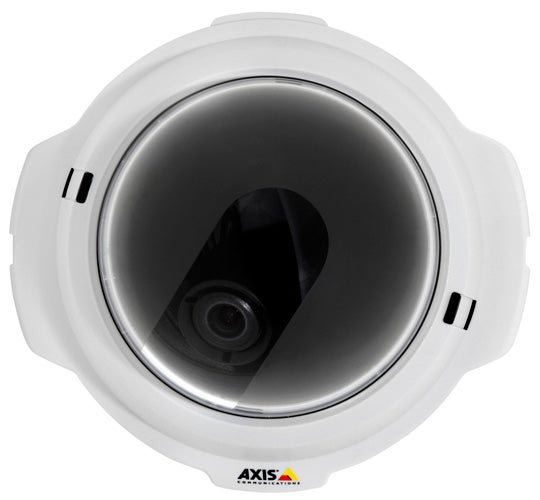
Axis delivers in the features department and its motion detection is one of the best available. You can configure up to 10 windows in the viewing area where you want to include or exclude motion and when events are triggered, images can be sent to multiple email addresses plus FTP and web servers. Axis has improved the detection sensitivity so it’s less likely to get triggered by activity outside the ‘include’ windows, and a new anti-tamper alarm warns you if the lens is obscured.
To test Axis’ performance claims for H.264, we used a system loaded with Network Instruments Observer to monitor bandwidth usage. We used five client systems to access the camera simultaneously over Fast Ethernet and with the M-JPEG feed selected and activity occurring in the viewing area, we saw an overall utilisation of 44 per cent.
With H.264 selected on all clients, utilisation fell to below 10 per cent. H.264 handles scenes with minimal activity better as it only transmits detected changes. With no movement in the viewing area and the clients using M-JPEG we saw an average utilisation of 43 per cent and this fell to only 3.5 per cent for H.264.
”’Verdict”’
With the P3301 IP camera, Axis scores yet again on image quality and surveillance features. At this price point there’s little competition to this camera and its support for H.264 delivers significant benefits for network utilisation.
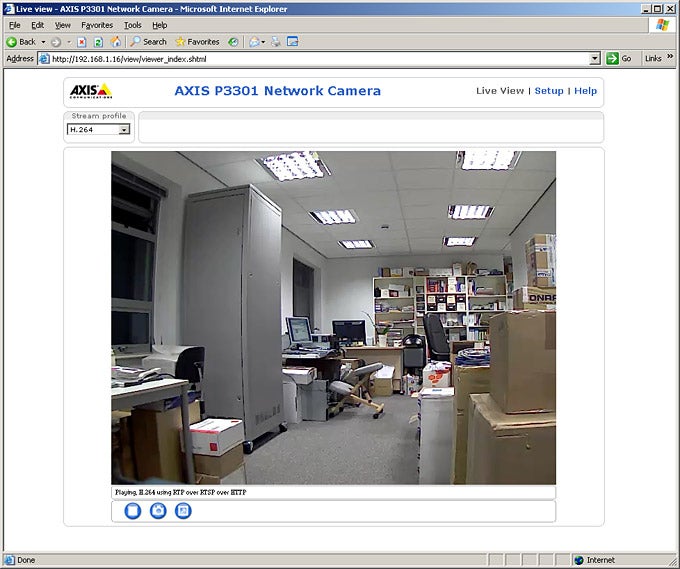
(centre)”’The P3301 delivers top-notch image quality under natural and artificial lighting conditions”’(/centre)
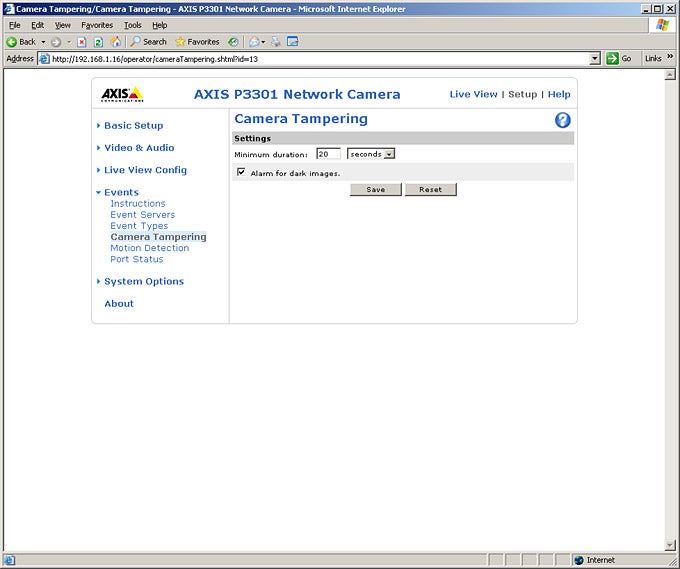
(centre)”’Along with improved motion detection the camera has a new anti-tamper option”’(/centre)
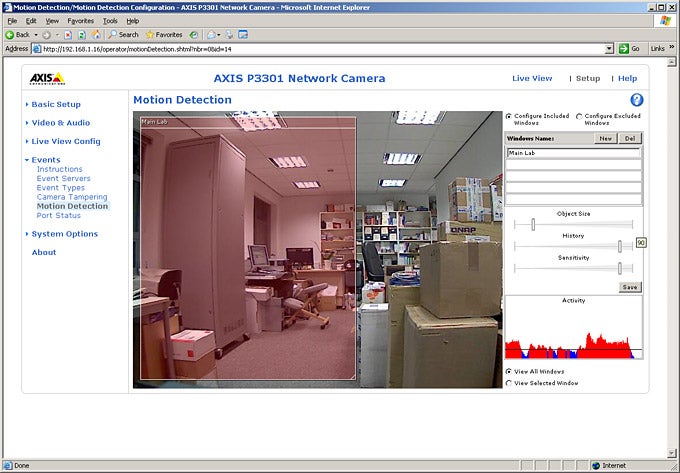
(centre)”’You can create include and exclude windows to fine-tune the camera’s motion detection”’(/centre)
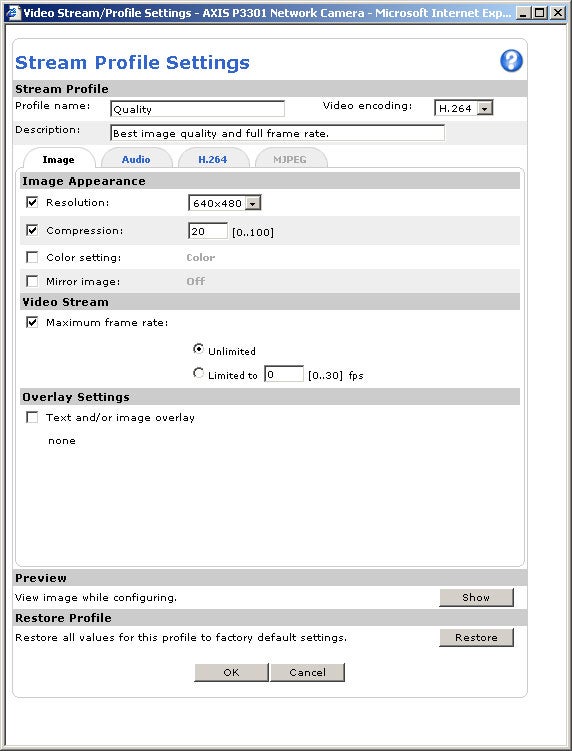
(centre)”’Different profiles for H.264 and M-JPEG streams can be created and selected from the Live View screen”’(/centre)
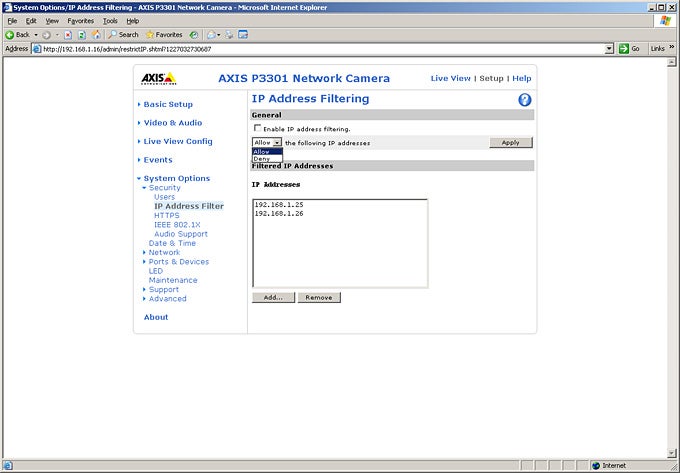
(centre)”’Access controls for image viewing are very good as along with user lists you can also apply IP filters”’(/centre)
Trusted Score
Score in detail
-
Value 8
-
Features 9

